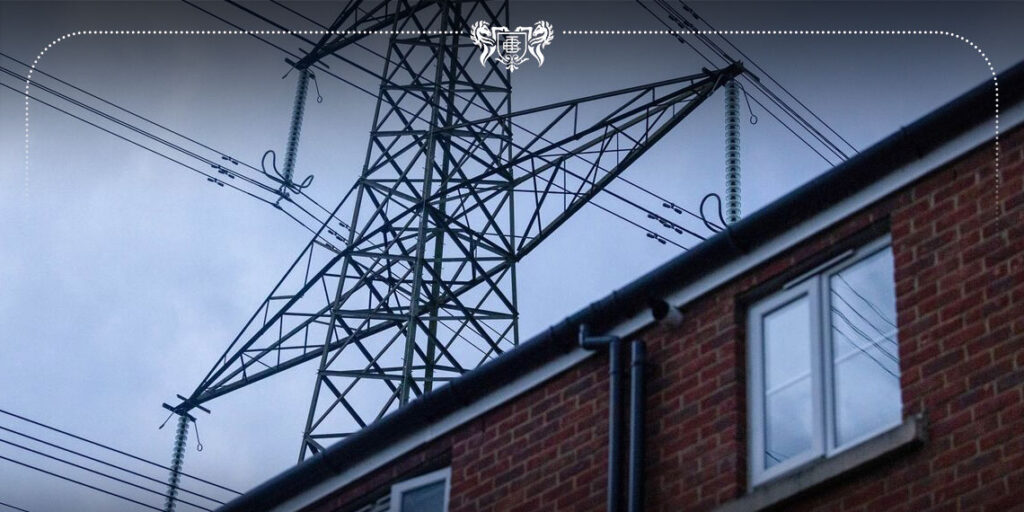As the UK weighs a proposal to restructure its electricity market, a contentious battle is emerging among the country’s leading energy players.
The proposal could either retain the current unified national electricity system or divide the UK into regional zones with differing power prices.
The decision, which will impact billions, will also play a pivotal role in meeting the nation’s climate goals, especially under Prime Minister Keir Starmer’s government.
National vs. Regional Market: What’s at Stake?
Presently, the UK operates with a single wholesale electricity price, regardless of regional supply and demand variations. However, an upcoming review—expected to conclude early next year—could divide the nation into distinct pricing zones.
This would mean that areas rich in wind energy, such as Scotland, would have significantly lower prices compared to the high-demand regions in the south.
Such a change could reduce costs for consumers in the north, promote investment, and potentially redirect business activity to regions with cheaper renewable power.
According to Adam Bell, head of policy at Stonehaven and former strategy lead at the UK’s energy ministry, “Both sides think they’re doing what’s right. There are a lot of people who stand to make or lose a lot of money either way.”
Advocates for a Market Split: Potential for Cost Savings and Investment
Key proponents of the split include Octopus Energy and the UK’s grid operator, who argue that regional pricing would reduce consumer costs, fulfil a Labour Party promise to cut bills and stimulate local economies.
Such a change could accelerate clean energy investment in the densely populated southeast, where local opposition has previously hindered progress.
Advocates believe this shift could also encourage companies to invest in areas like Scotland, which boasts some of the world’s cheapest electricity.
Octopus Energy CEO Greg Jackson, an ardent supporter of the market split, stated, “It’s unconscionable we’re adding billions to our bills in balancing costs and turning off wind farms and solar farms. Our founding mission was to drive energy costs down for customers. This is the only potential policy that will do that.”
Opponents Worry About Investment Disruptions
On the other side, energy companies with substantial investments in infrastructure warn that a fragmented market could disrupt their business models. With billions already invested into the country’s energy grid, transitioning to a new system could destabilise these investments at a time when rapid decarbonisation is vital. Maintaining investor confidence is essential as the government seeks accelerated growth in green energy to meet ambitious climate targets.
Challenges of the Current System
More than 40% of the UK’s wind farms are located in Scotland, yet less than 10% of the country’s electricity demand is based there.
This imbalance is costly; the grid operator frequently pays wind farms to halt generation during high-supply periods and simultaneously compensates gas plants in the south to maintain grid stability.
During the energy crisis, this balancing cost peaked at £2 billion, and although it has since decreased, it remains substantial and could rise to over £8 billion annually by the end of the decade.
This grid congestion limits the benefits Scottish households and businesses gain from locally sourced low-cost power. Instead, they effectively subsidise southern consumers who reap the rewards of cheaper electricity.
Government’s Balancing Act
The decision now rests with Starmer’s government, following a deferred decision by its Conservative predecessor earlier this year.
Regardless of the path chosen, the government must stay committed to decarbonising the national grid by 2030 and lowering consumer bills.
In a recent statement, a spokesperson from the Department of Energy Security and Net Zero confirmed the government’s dedication to reform that prioritises both billpayers and investment incentives: “We are reviewing responses to the consultation on reforming electricity markets and ensuring that any reform options taken forward focus on protecting bill payers and encouraging investment.”
As the UK stands at this critical juncture, the outcome of this debate will shape the future of its energy landscape, influencing consumer costs, investor confidence, and the country’s progress towards a greener, more balanced power system.


